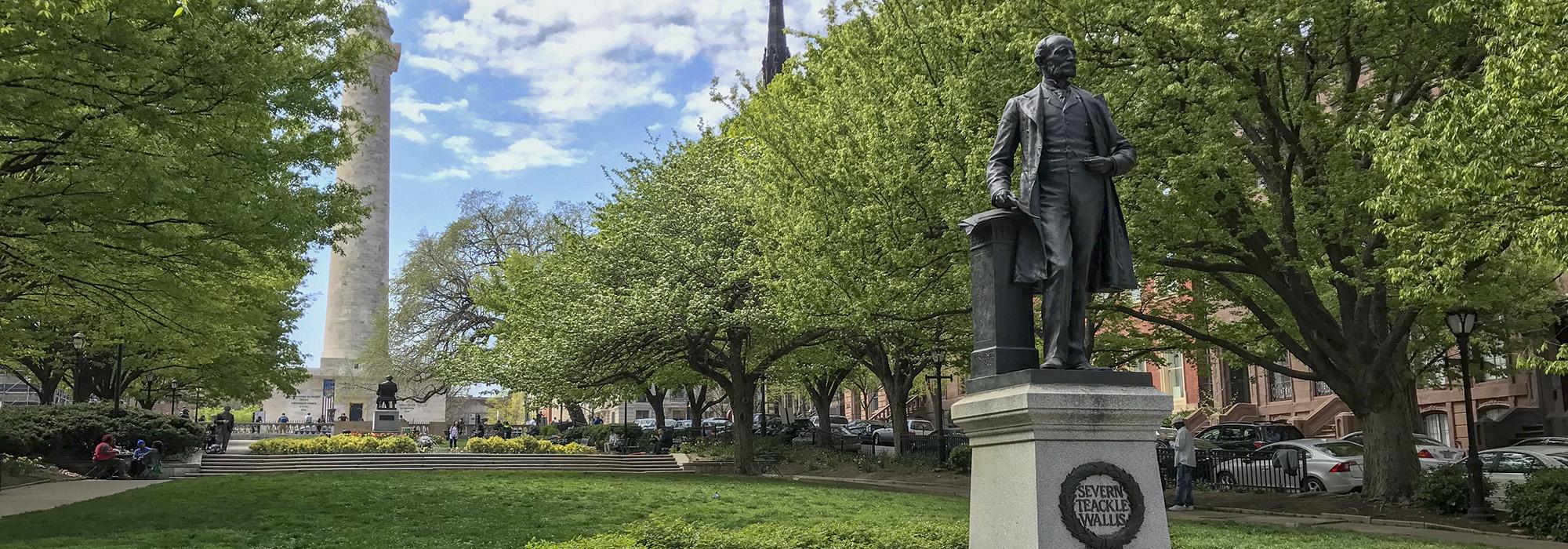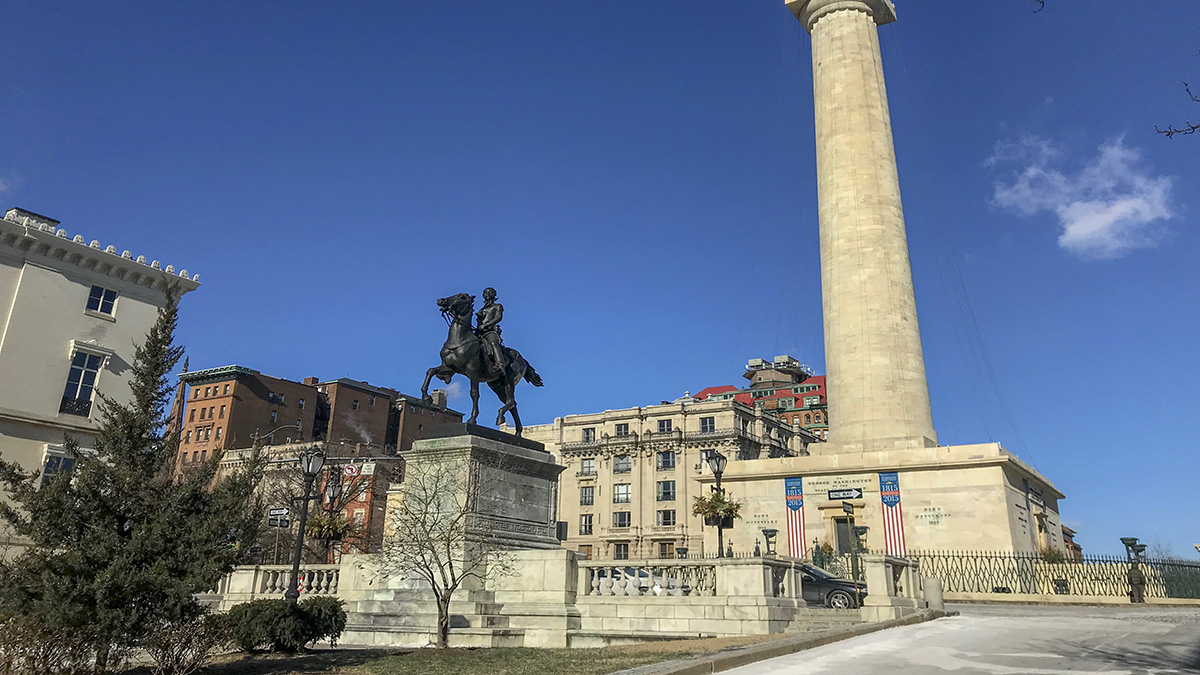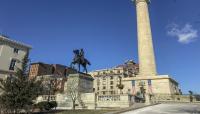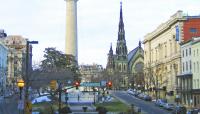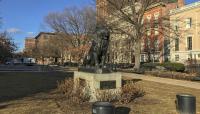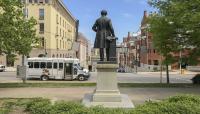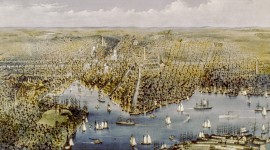Landscape Information
In 1810 the General Assembly of Maryland authorized the erection of the nation’s first monument to George Washington. A design by architect Robert Mills was selected in 1813, and the monument was built from 1815 to 1829 on a parcel of land (donated by politician and Revolutionary War veteran John Eager Howard) axially aligned with Charles Street, north of downtown. The monument comprises a 165-foot-high Tuscan column placed on a square pedestal and capped with a fifteen-foot-high stone statue of George Washington.
In 1831 four one-block-long, rectangular parks were laid out in a cruciform arrangement along Monument and Charles Streets, radiating out from the monument. This collection of open spaces became known as Mount Vernon Place. Originally open lawns, the squares were altered multiple times in subsequent decades. Frederick Law Olmsted, Sr. redesigned the north and south squares, removing fences and installing additional plantings. Robert Garrett and William Walters redesigned the west square in 1884, adding sculptures and a fountain. In 1916 the Beaux Arts architects Carrère & Hastings transformed the squares, introducing fountains, stairs, and balustrades. The dramatic effect of the squares and monument, coupled with Howard’s new Greek Revival home built to the northeast in 1829, helped establish Mount Vernon Place as an affluent neighborhood, which would soon attract cultural institutions, including the Walters Art Gallery and the Peabody Library.
In 2009 the non-profit Mount Vernon Place Conservancy engaged OLIN landscape architects to prepare a masterplan. Managed by a public-private partnership, the site was rehabilitated in 2015.
The Mount Vernon Place Historic District was listed in the National Register of Historic Places and designated a National Historic Landmark in 1971.



